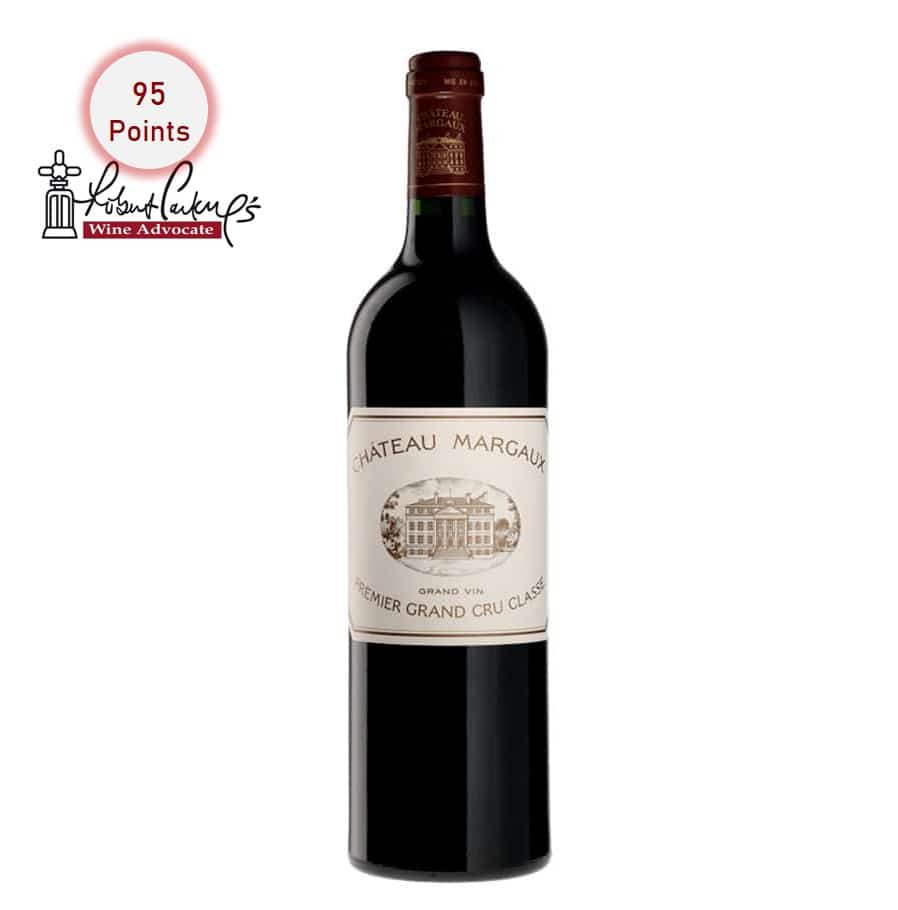75cl / 13%
A valentine of dark chocolate and roses melded with the aromatics of licorice, blackberry and cocoa create a complex perfume.
The wine is elegant with a refined character, supple tannins and a burst of fresh cassis, cherry and cocoa that builds on the palate. The most striking quality to this wine is the clarity of fruit in the finish.
RM3,554.00
Colour: Dark ruby garnet
Aroma: Affording the glass five to ten minutes to open, the aromatics are very similar to those expressed out of barrel, those dark cherries and cocoa, roses and violets, tightly wound at first but unfurling beautifully and seemingly with each swirl of the glass.
Palate: The palate is medium-bodied with very fine tannin and it appears to have fomented a little more finesse during its levage. There is wonderful mineral tension and dash of spiciness on the persistent finish. There remains some tightness here, the implication that this is a Chteau Margaux determined to give long-term pleasure. Therefore, do not be afraid to give it a decade in the cellar.
Grape Varieties: 90% Cabernet Sauvignon, 5% Merlot, 3% Cabernet Franc and 2% Petit Verdot.
Awards: 95pts-Wine Advocate-Parker
Château Margaux was known since the XII century, it was called “La Mothe de Margaux” (the Margaux mound) and, at that time, it didn’t have any vines. The old name didn’t happen by chance; in a flat region like the Médoc, the slightest “mound” was easily distinguished and the greatest wines are always produced on sloping land that ensures good drainage.
The successive owners of “La Mothe de Margaux” were, of course, important lords but we had to wait for the arrival of the Lestonnac family to set up the estate as we know it today. Pierre de Lestonnac succeeded, in the ten years from 1572 to 1582, in completely restructuring the property as well as the vineyard and anticipated the general evolution of the Médoc that had started to abandon cereal growing in favour of vines. At the end of the 17th century, Château Margaux occupied 265 hectares, land that wouldn’t be divided again. A third of the estate was dedicated to vines, which is still the case today.
At the beginning of the 21st century, Bordeaux wines are experiencing unprecedented success. This prosperity, as well as the rapid expansion of other regions in the world, has placed Château Margaux in a more competitive climate, and also allowed the underlining of its unique position: that of a First Growth classified in 1855, enjoying a terroir that has been shaped by the passing centuries.

| Brand | |
|---|---|
| Return Policy | Non-Returnable : This product is non-returnable due to exclusivity/consumable nature of the product. |
| SID | D02B |
| Country | Bordeaux, France |
| Product Type | Red |
| Grape Variety | Cabernet Sauvignon |
Discover our diverse range of flavourful alternatives, ready to surprise and delight your palate.
Industry-leading security powered by iPay88 & Stripe.
Besides Visa & Mastercard, we also accept T&G, Grab, and other eWallets
Unleash your passion for wine and spirits! Join our community of enthusiasts for insider perks, early access to new arrivals, free tastings, exclusive events, discounts, and unforgettable wine experiences.
Become a MyWine Club member today!
A curated website for fine wines, spirits, cigars, food and unique dining experiences too.
Click HERE to find out how to list your event on DiineOut.com or please contact our Hotline (Whatsapp Only): +6018-201 2821.